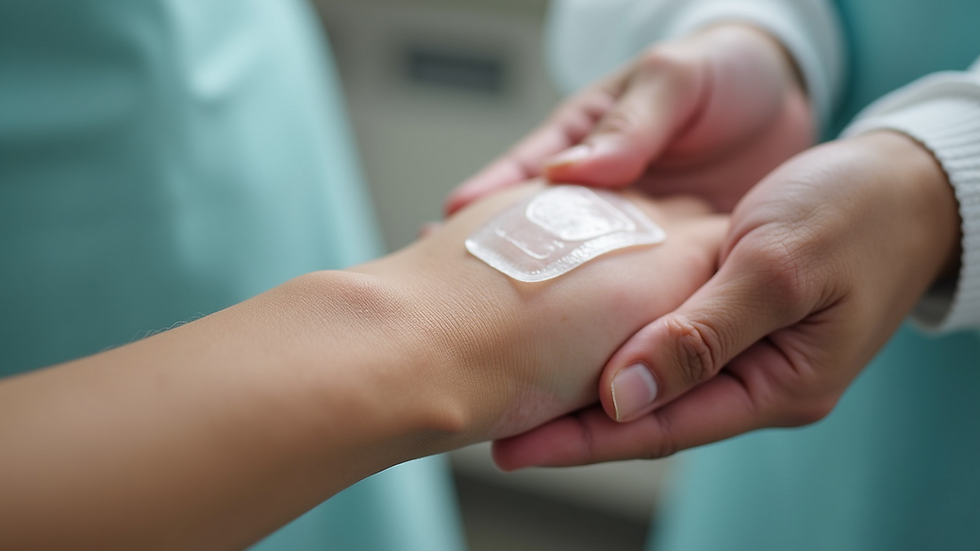Effective Strategies for Advanced Wound Care
- William Muro

- Aug 11
- 4 min read
Taking care of wounds properly is essential for healing and preventing complications. Whether you’re managing a minor cut or a more serious injury, knowing the right strategies can make a big difference. Advanced wound care goes beyond basic first aid. It involves smart planning, the right products, and consistent care to help wounds heal faster and better.
In this post, I’ll walk you through effective strategies that anyone can use. These tips are practical, easy to follow, and designed to give you confidence in managing wounds safely. Plus, I’ll share how staying organized and informed can reduce stress and improve outcomes.
Understanding Advanced Wound Care: What You Need to Know
Advanced wound care means using modern techniques and products to support the healing process. It’s not just about covering a wound with a bandage. It’s about creating the best environment for your body to repair itself.
Here are some key points to keep in mind:
Clean the wound gently: Use mild soap and water or saline solution. Avoid harsh chemicals that can damage tissue.
Choose the right dressing: Different wounds need different dressings. Some keep moisture in, others absorb excess fluid.
Monitor for infection: Watch for redness, swelling, or unusual discharge. Early detection helps prevent serious problems.
Manage pain and swelling: Elevate the injured area and use over-the-counter pain relief if needed.
Keep the wound protected: Avoid unnecessary exposure to dirt or friction.
Using these strategies can speed healing and reduce scarring. It also lowers the risk of infection, which is crucial for your overall health.

How to Implement Advanced Wound Care in Your Routine
You don’t need to be a medical expert to apply advanced wound care principles. Here’s a simple step-by-step guide you can follow:
Assess the wound: Look at size, depth, and type. Is it a scrape, cut, or something deeper?
Clean carefully: Rinse with saline or clean water. Pat dry with a sterile cloth.
Apply an appropriate dressing: For dry wounds, use a moist dressing to encourage healing. For wet wounds, use absorbent materials.
Change dressings regularly: Follow product instructions or your healthcare provider’s advice. Usually, once a day or when the dressing is wet or dirty.
Watch for signs of infection: If you notice increased pain, redness, or pus, seek medical advice promptly.
Keep the wound elevated if possible: This helps reduce swelling and discomfort.
Stay hydrated and eat well: Nutrition plays a big role in healing.
By following these steps, you create a healing-friendly environment. It’s a simple routine that can make a big impact.

What are the 4 C's of wound care?
The 4 C’s are a helpful way to remember the core principles of effective wound management. They guide you in making smart choices for better healing.
Clean: Always start by cleaning the wound to remove dirt and bacteria. This reduces infection risk.
Cover: Protect the wound with the right dressing to keep it moist and shielded from germs.
Control: Manage pain, swelling, and bleeding. Use elevation, pressure, or medication as needed.
Check: Regularly inspect the wound for changes. Early detection of problems leads to faster treatment.
These four steps are easy to remember and apply. They form the foundation of advanced wound care and help you stay on track.

The Benefits of Using Technology and Research in Wound Care
One of the best ways to improve wound care is by staying informed about the latest research and tools. Technology has brought new products and methods that make healing faster and safer.
For example:
Smart dressings that monitor moisture and infection.
AI-powered planners that help track wound care schedules and reminders.
Clinical studies offering access to cutting-edge treatments.
Using these resources can reduce stress and improve coordination, especially if you’re managing chronic wounds or complex cases. You can even participate in clinical research studies to access new therapies and contribute to medical advancements.
If you want to learn more about ongoing studies and how they might help you or someone you care for, check out this link to wound care.
Tips for Caregivers and Healthcare Professionals
If you’re caring for someone else, your role is vital. Here are some tips to make wound care easier and more effective:
Stay organized: Use checklists or digital tools to track dressing changes and symptoms.
Communicate clearly: Keep notes on wound progress and share updates with healthcare providers.
Educate yourself: Learn about different wound types and treatments to provide the best care.
Be patient and gentle: Healing takes time, and comfort matters.
Encourage good nutrition and hydration: Support overall health to speed recovery.
Healthcare professionals can benefit from coordinating with research groups and using smart planning tools to streamline care and stay compliant with protocols. This approach leads to better patient outcomes and less stress for the care team.
Advanced wound care is about more than just treating injuries. It’s about smart planning, staying informed, and using the best tools available. Whether you’re managing your own wound or caring for someone else, these strategies can help you feel confident and supported every step of the way.
Remember, simple updates to your routine can lead to better results - faster healing, fewer complications, and peace of mind. Need help? We’re here for you every step of the way.






Comments